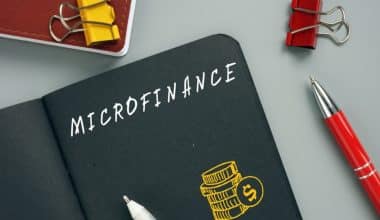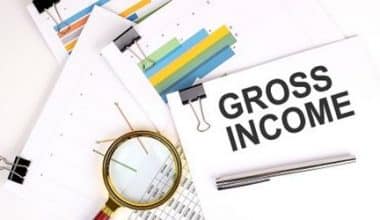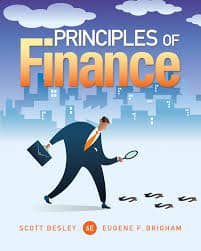Let’s examine what these various balances are, how they work, and the effect they have on your financial situation. When you have all of the details, it’s easier to make an accurate decision about your bank and credit card statements, as well as your finances. This article, says all about what a statement vs what a current balance entails.
Statement Balance
A statement balance is a total amount due after a billing cycle. Banks and creditors provide a monthly statement detailing all transactions for the previous month. A statement balance, a due date, and a minimum payment are all included on the bill. Your statement balance will include all of your monthly transactions and any unpaid balance from your previous statement. To prevent accruing interest, you should make your statement balance payment by the due date. Furthermore, to avoid harming your credit score, you should always make timely and complete payments. At the very least, you should make each month’s minimum payment.
Why is My Statement Balance Higher Than My Current Balance?
Balances on statements can be greater than current balances. A current balance is an up-to-date record of all transactions. These transactions may include payments made after your monthly statement was in acceptance. In this situation, your statement balance would be more. Given that no substantial transactions occurred after the statement date. If this is the case, your current balance may be more than the balance on your statement.
To recap, your current balance is your balance at the moment, taking all relevant aspects into account. You calculate your statement balance as the total of all transactions throughout a billing period, which is typically a month. Because they reflect distinct periods, the two balances may differ.
Which Balance Are You To Pay?
Here are the types of balances that are important for you to pay for
#1. Pay Off Your Balance on Your Statement to Avoid Interest Charges
You have a grace period on interest after your credit card provider issues your most recent statement. This grace time varies according to the lender and agreement, but it is often between 21 and 30 days. You avoid interest if you pay the statement balance in full before the grace period expires. The grace period is solely applicable to the month’s purchases. Interest will be charged on any debt carried over from another month. Interest is fairly strong and can quickly accumulate. Keeping your bill balance current by paying it in full each month can help you avoid these additional fees. Additional information about credit card statements is available here.
#2. Avoid Interest Charges by Using AutoPay
To keep things simple, it’s prudent to enroll in AutoPay to prevent incurring interest. Calculating how much you spend on your credit card each month might be straightforward. Set up AutoPay for that amount with your bank. It ensures that you pay on time and in full. This helps to maintain a healthy credit score. Additionally, it assists in avoiding a high-interest rate. Ascertain that AutoPay is configured before the due date of your monthly statement.
Next to read is the statement vs current balance analysis. Read through.
Statement Balance vs Current Balance
However, if you have spent more than you have recovered, your current balance may be greater than the statement balance. This occurs during the grace period during which you must pay your account. Due to the frequency with which you use your card, your current balance will increase. As a result, your statement balance will remain unchanged, as it represents the amount owed for the past statement cycle.
To get more understanding of statement vs current balance, let us first understand what both terms mean.
What is A Statement Balance
Your statement balance is the amount due at the end of a billing cycle, which normally lasts between 20 and 45 days. Consider it a snapshot of your account every month. It is the sum of all purchases, fees, interest, and overdue balances, less any payments or credits made since the last statement.
Paying it off on or before the due date every month will assist you to avoid paying interest. It’s also worth noting that once the statement balance is open, it remains constant until the end of the next billing cycle.
What is A Current Balance
Paying it in full will temporarily eliminate the balance on your card. However, pending transactions, fees, and interest charges may post later, necessitating more payments. It may vary depending on how frequently you use your card. However, pending purchases do not appear in your current balance until they are in the procession.
How Your Credit Score Is Affected by Your Balance
Typically, credit card issuers report your amount to the credit bureaus following each payment cycle. However, the precise timing may vary for each company. Additionally, because your credit report reflects the balance on your card at the time the issuer reported the information, the amount may differ from the balance on your most current statement.
Additionally, credit-scoring organizations calculate your credit score based on your credit utilization percentage. Thus, you report the balance on your credit card at the time to the credit agencies can affect this.
Your credit utilization ratio indicates how much credit you’re utilizing in comparison to the available credit. While it is not always necessary, paying down your existing load will assist reduce your credit usage ratio, which can help boost your score.
How to Determine the Balance of Your Statement vs Current Balance
On your monthly credit card statement, you’ll find your bill balance. In most circumstances, your lender will give this to you via mail or, if desired, electronically. Because your current balance is dynamic, you may always obtain the most up-to-date information by logging into your online account.
Additionally, when utilizing the Capital One Mobile app, it’s simple to locate your statement balance and current balance. After logging in and launching the app, tap the Capital One credit card icon. At the top of the screen, the site will indicate your current balance and available credit.
Is It Better to Pay the Current Balance or the Statement Balance?
You are not a must pay off your present balance in full to avoid paying interest. Simply the balance on your credit card statement. Paying the sum in full consistently on the due date will assist you to avoid paying interest or late penalties.
If the charges you’ve made since your last billing cycle have added to your debt beyond your comfort level, paying off your current balance early may help you improve your credit usage ratio and credit score.
If you are unable to pay the entire debt on your account, it is critical to make at least the minimum payment. This might help you maintain a positive balance on your account and safeguard your credit score. Additionally, you will often avoid late fees and penalties.
Capital One’s Mobile app also allows you to set up automatic payments and bill reminders. These can assist you in making timely payments, understanding your balance, and maintaining a positive balance on your account.
Managing the Balances on Your Statements and Current Accounts
Understanding the difference between your statement balance vs your current balance might aid in account management.
Your statement balance is a snapshot of your billing cycle from the previous month. Additionally, paying it off on time will help you save money on interest and improve your credit utilization ratio. However, if you are unable to pay off your entire statement debt, attempt to make at least the minimum payment by the due date to maintain good standing on the account.
The current amount is the most recent record of your credit card activities. Maintain an eye on this, as you may eventually be required to make payments on it. Additionally, depending on the date on which your debt is reported to credit bureaus, it may affect your credit report, credit utilization, and credit score.
What is Statement Balance
Your statement balance indicates how much money you owe on a credit card as of the most recent statement. Your credit card provider maintains track of all the changes you make each month. Once a month, your credit card company “settles up” and sends you an invoice for the previous month’s charges.
What If I Am Unable To Make A Payment On My Bill Balance?
Your most recent statement balance indicates that you’re being requested to begin making payments or forming a repayment plan for the money you’ve spent. At this point, you must begin making minimum payments on your bill balance. This is typically a modest proportion of your balance and it will be showing on your credit card statement.
Additionally, you can pay off your entire statement balance. This way, you will avoid paying interest charges (the cost of borrowing). Credit card providers will charge you interest only if you begin carrying a balance on your bill. If you pay off your complete balance each month, you will not be charged any further fees.
Paying on time allows you to avoid late penalties and maintain a healthy credit score. If you are unable to pay the whole sum on your account, you can still prevent problems by paying the minimum payment. You will begin accruing additional interest charges on the remaining balance, but your credit will remain unaffected.
Is It True That Paying Off Your Credit Card Bill Can Help Your Credit Score?
While you are not compelled to pay off your credit card balance until it appears on your statement, there are circumstances in which you may wish to do so sooner. Your credit score, the statistic used by lenders to determine your trustworthiness as a borrower, is influenced by the amount of outstanding debt you have. The more available credit you have but are not utilizing, the higher your credit score will be. This is referred to as credit utilization, and it is the second most essential component in determining a credit score, behind timely payments.
Unlike your bank or credit union, which does not consider your current balance when calculating interest costs, credit reporting bureaus do. If you have a large debt on your credit card when your issuer reports it to the credit bureaus, your credit score may suffer, even if you pay it off in full each month.
Reasons for a Difference Between the Statement Balance and Current Balance
The primary reason your statement balance may differ from your current balance is that your current balance is regularly updated in response to account activity.
Even after your payment process has ended, interest charges, deposits to your account, payments, and expenditures continue to occur. Your current balance represents the fluctuating nature of your balance, regardless of whether it’s on a credit card or a bank account.
While you should always make the minimum payment specified on your account, it is critical to understand your statement balance since you can prevent interest costs by paying the entire statement. Interest is not calculated until the statement date, which gives you a grace period before you have to deal with it. The purchase APR applies exclusively to unpaid balances on the statement.
Cash advances are unique. Cash advances begin accruing interest earlier than the statement date, therefore cardholders should include their entire current balance in their credit card payment if it contains a cash advance. Alternatively, they will immediately be charged interest. While cash advances do not include a grace period, normal purchases do.
Why Is My Statement Balance So High?
In this situation, your statement balance would be more. Given that no substantial transactions occurred after the statement date. If this is the case, your current balance may be more than the balance on your statement.
Should I Pay Current Balance or Statement Balance?
You are not required to pay off your current balance in full to avoid paying interest. Simply the balance on your credit card statement. Paying the sum in full consistently on the due date will assist you to avoid paying interest or late penalties.
What happens if I only pay statement balance?
Your statement balance indicates how much money you owe on a credit card as of the most recent statement. Your credit card provider maintains track of all the changes you make each month.
What happens if I don’t pay my statement balance?
Credit card providers will charge you interest only if you begin carrying a balance on your bill. If you pay off your complete balance each month, you will not be charged any further fees.
Is the Statement Balance Money I Owe?
What you owe on your credit card at the end of the previous payment cycle is normally shown on your statement balance. However, the whole amount you owe will usually be displayed as your current balance.
What Is a Good Credit Score?
Credit scores in the 580–669 range are generally regarded as fair, those in the 670–739 range are acceptable, those in the 740–799 range are very good, and those in the 800+ range are exceptional. However, these ranges do change based on the credit scoring methodology.
What Happens if I Only Pay the Statement Balance?
If you pay the total amount shown on your statement, you will have paid the correct amount. Since you won’t be carrying over debt from your previous billing cycle, you won’t have to worry about interest charges on those purchases for the following billing cycle (as long as you pay by the due date).
Related Article
- Balance Sheet vs. Income Statement: Examples, Differences & Relationship
- FINANCIAL REPORTING: All you need to know with Examples (+ quick easy tools)
- Available Credit: What Does It Mean on a Credit Card
- FINANCIAL STATEMENT OF A COMPANY: Best 2023 Samples & Templates to Learn From
- When Should I Pay My Credit Card Bill: Best Easy Guide & What You Need
- WHAT IS A SMALL BUSINESS MANAGEMENT: Definitions, Guidelines, & Best Software In 2023
- DIRECT INDEXING: Understanding What Direct Indexing Means
- WHAT IS A REGRESSIVE TAX: Definition, Examples, & Facts
- What is Discretionary Income: Definition, Calculation & Impact on The Economy






